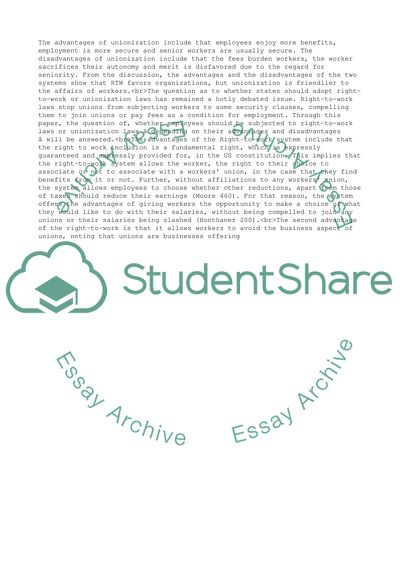Cite this document
(“Pros and Cons of working in both right-to-work and forced unionism Research Paper”, n.d.)
Pros and Cons of working in both right-to-work and forced unionism Research Paper. Retrieved from https://studentshare.org/business/1627612-pros-and-cons-of-working-in-both-right-to-work-and-forced-unionism-states-from-employees-point-of-view
Pros and Cons of working in both right-to-work and forced unionism Research Paper. Retrieved from https://studentshare.org/business/1627612-pros-and-cons-of-working-in-both-right-to-work-and-forced-unionism-states-from-employees-point-of-view
(Pros and Cons of Working in Both Right-to-Work and Forced Unionism Research Paper)
Pros and Cons of Working in Both Right-to-Work and Forced Unionism Research Paper. https://studentshare.org/business/1627612-pros-and-cons-of-working-in-both-right-to-work-and-forced-unionism-states-from-employees-point-of-view.
Pros and Cons of Working in Both Right-to-Work and Forced Unionism Research Paper. https://studentshare.org/business/1627612-pros-and-cons-of-working-in-both-right-to-work-and-forced-unionism-states-from-employees-point-of-view.
“Pros and Cons of Working in Both Right-to-Work and Forced Unionism Research Paper”, n.d. https://studentshare.org/business/1627612-pros-and-cons-of-working-in-both-right-to-work-and-forced-unionism-states-from-employees-point-of-view.


